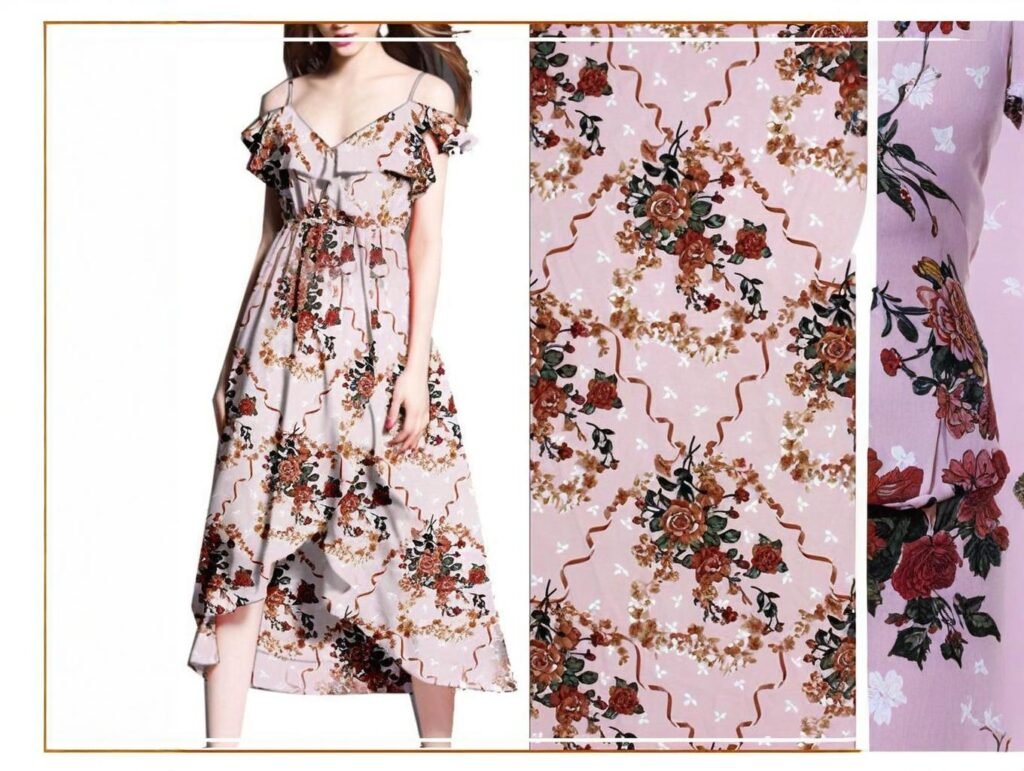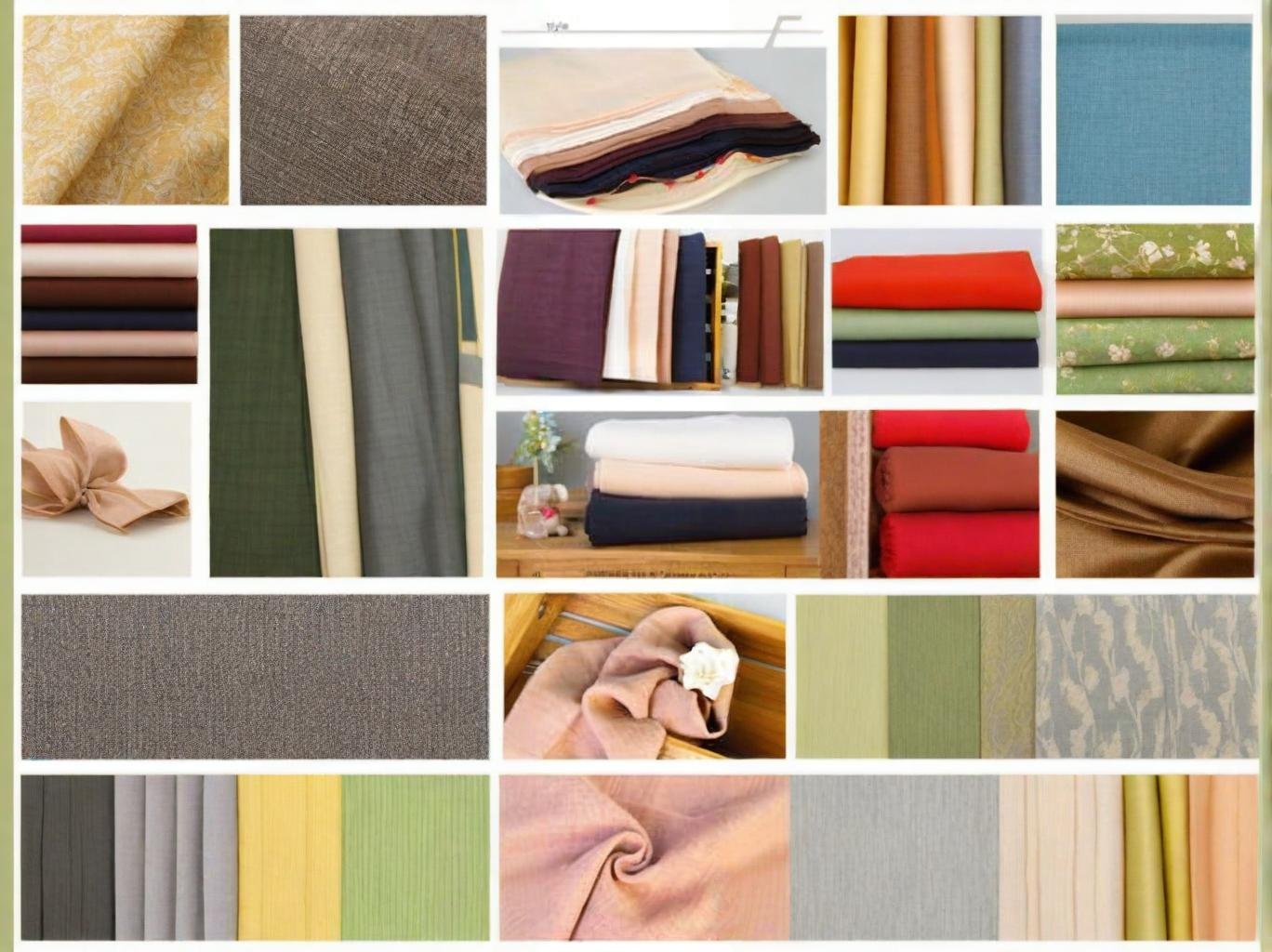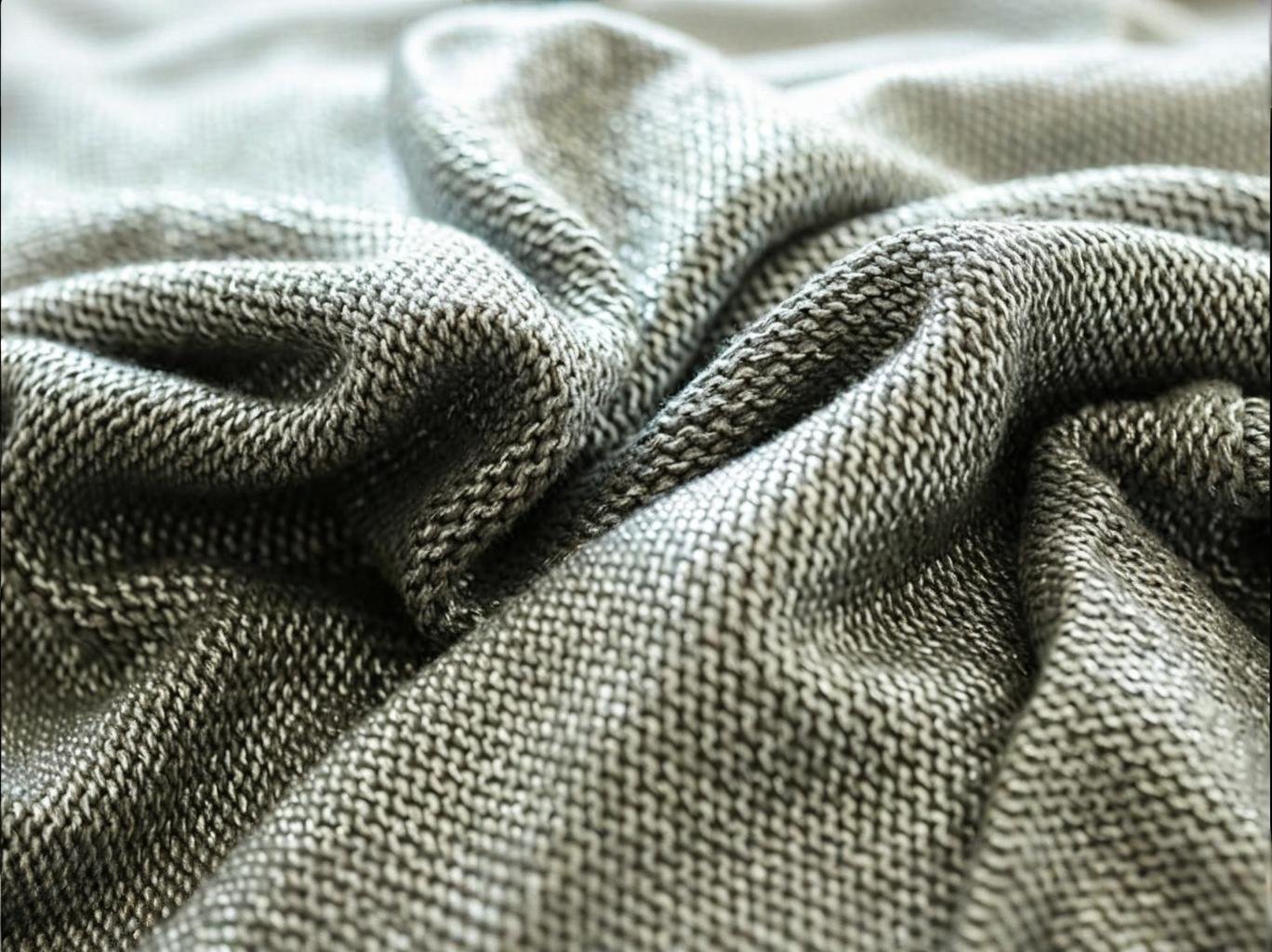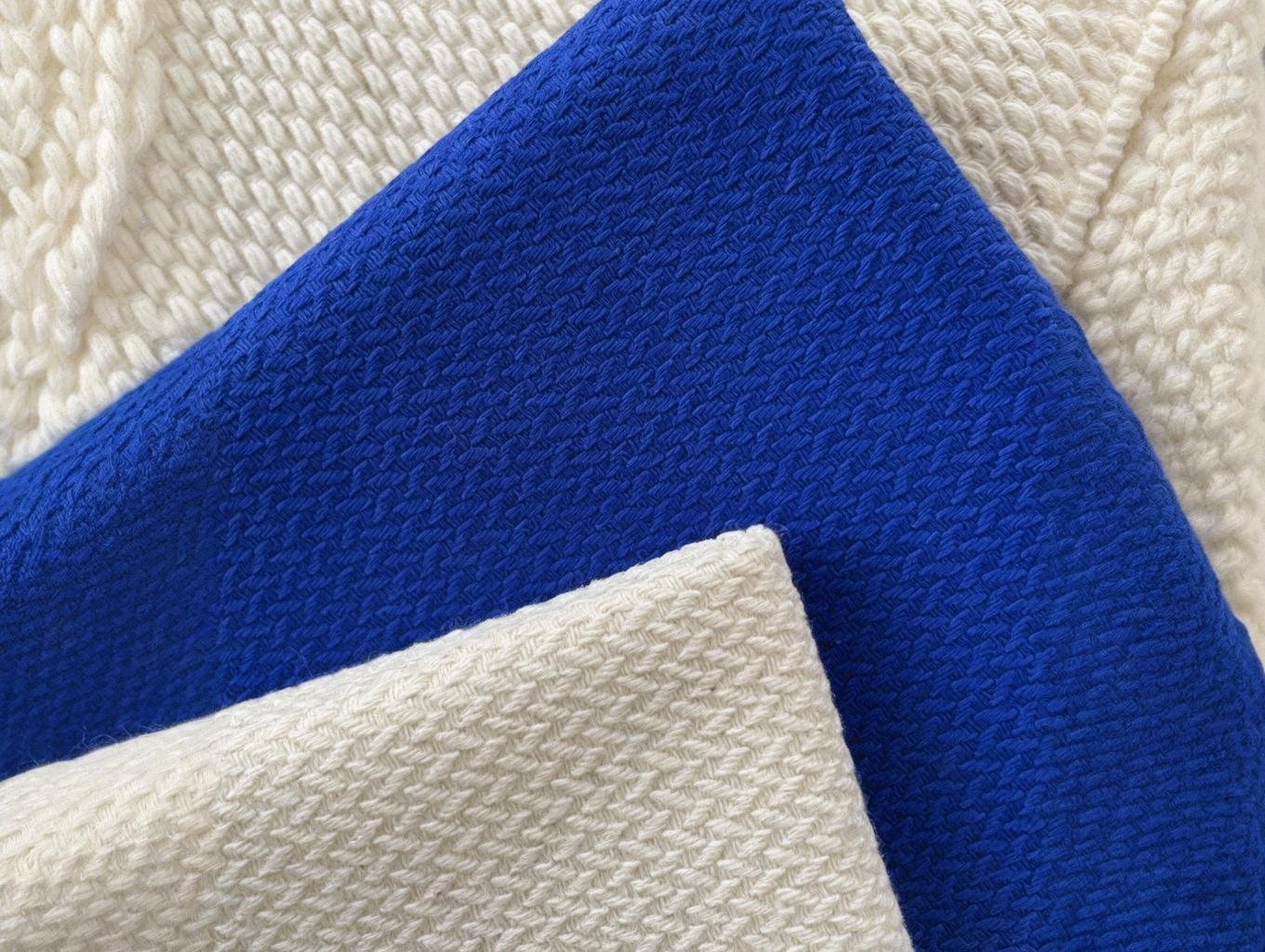Polyester Material in Automotive Interiors: Durability & Safety

From the touch of your car seat to the lining of your trunk, polyester is everywhere inside modern vehicles—and for good reason. As drivers demand sleeker, more functional, and long-lasting interiors, polyester materials have quietly become the go-to solution for designers and engineers seeking performance without compromise. But not all polyester is created equal, and its real value lies in how it performs under the relentless stress of sunlight, friction, temperature shifts, and—critically—safety regulations.
Polyester is widely used in automotive interiors due to its exceptional durability, resistance to UV and abrasion, flame retardant adaptability, and compliance with global safety standards. It is employed across seats, door panels, carpets, headliners, and trunk linings for its strength, versatility, and cost-efficiency.
What might look like an elegant woven textile or a suede-like finish on a headrest could, in fact, be a high-performance polyester fabric engineered to meet dozens of performance tests. Take the example of a German electric vehicle brand that replaced its nylon door paneling with flame-retardant polyester. The result: 15% cost savings, lower VOC emissions, and a 20% improvement in UV fade resistance—all while meeting Euro NCAP flammability criteria.
So, how exactly does polyester support long-term safety and durability in car interiors? Let’s explore the answers through materials science, field performance, and real-world application.
1. What Types of Polyester Materials Are Commonly Used in Automotive Interiors?
In automotive interiors, the most commonly used polyester materials include woven polyester, nonwoven PET, polyester knit fabrics, and polyester composites with foam or backing layers. These materials are chosen based on area-specific requirements like softness, abrasion resistance, flame retardancy, and formability.
Primary Polyester Fabric Types
| Fabric Type | Construction | Common Applications |
|---|---|---|
| Woven Polyester | Tight yarn-based weave | Seat covers, door trims |
| Nonwoven PET Felt | Fiber-bonded web | Trunk linings, headliners, underfloor panels |
| Warp-Knit Polyester | Loop-based knit | Seat backs, decorative inserts |
| Coated Polyester Laminates | Laminated with PU or PVC | Dashboard skins, soft-touch zones |
Why These Types Are Chosen
- Woven polyesters offer dimensional stability and allow design flexibility through different weaves and textures (twill, dobby, jacquard).
- Nonwovens are lightweight, economical, and ideal for acoustics and insulation.
- Knit polyesters offer stretchability and form-fitted aesthetics, often used in molded areas.
- Laminated composites provide a tactile finish while retaining the core strength of polyester.
Performance Enhancements via Finishing
- FR (flame-retardant) coating to meet FMVSS 302 or UNECE R118 standards.
- Anti-pilling and abrasion-resistant finishes for seat longevity.
- UV inhibitors to prevent fading and degradation.
Real Application Example
SzoneierFabrics developed a 220 GSM warp-knit polyester for a South American sedan’s headrest insert, engineered with anti-UV and anti-yellowing additives. The fabric passed 600 hours of Xenon arc testing with minimal color shift—doubling the lifespan of the previous nylon-based alternative.
2. How Durable Is Polyester Fabric Under Long-Term Automotive Use?
Polyester is considered one of the most durable synthetic fibers for automotive applications due to its high tensile strength, abrasion resistance, dimensional stability, and ability to withstand heat and chemical exposure. It maintains integrity across a wide range of environmental conditions, making it suitable for extended use in interior surfaces.
Key Durability Metrics
| Durability Test | Performance Range for Automotive-Grade Polyester |
|---|---|
| Martindale Abrasion | 30,000 – 100,000+ rubs |
| UV Resistance (Xenon Arc) | 500 – 1500 hours |
| Dimensional Stability | <2% shrinkage after heat and humidity cycles |
| Tear Strength | 25–70 N (ASTM D2261) |
| Hydrolysis Resistance | Excellent (up to 85% RH, 70°C, >500 hrs) |
Real Use Case: Fleet Vehicle Seats
A Japanese OEM sourcing polyester fabric for public transport seats faced challenges with staining, fiber breakdown, and loss of color under harsh sunlight. SzoneierFabrics introduced a textured woven PET blend with FR and anti-fade additives. After 18 months of use in humid coastal regions, seat integrity and color remained intact, with minimal maintenance requirements.
How Durability Plays Out in Vehicle Zones
- Seats: Abrasion and tear resistance are critical due to repeated contact and pressure.
- Door Panels: Resistance to friction, scuffs, and minor impact.
- Headliners & Trunk Liners: Require dimensional stability and hydrolysis resistance in variable temperature/humidity zones.
Why Polyester Excels
Unlike natural fibers like cotton or wool, polyester doesn’t absorb moisture, doesn’t swell or rot, and resists insect and microbial damage. Its hydrophobic nature and high molecular stability make it ideal for enclosed environments like car cabins.
3. What Makes Polyester a Safe Choice for Car Seats and Interior Surfaces?
Polyester is a safe material for automotive interiors because it is inherently stable, flame retardant-compatible, low-emission, and easy to engineer for safety compliance. Its structural integrity under heat and its ability to meet global flammability standards make it ideal for seats, ceilings, and door panels.
Fire Safety & Compliance
| Safety Standard | Polyester Capability |
|---|---|
| FMVSS 302 (USA) | Meets or exceeds with FR treatment |
| ECE R118 (Europe) | Compatible with vertical flame test requirements |
| GB 8410 (China) | Can be treated to self-extinguish under 100mm/s limit |
- Polyester is not naturally flame-retardant but is highly receptive to FR additives during extrusion or via surface treatment.
- It supports both halogen-free and phosphorus-based FR systems for eco-friendly compliance.
Low VOC and Emission Levels
- Compared to materials like PVC or certain foam composites, polyester textiles emit fewer volatile organic compounds (VOCs).
- This is critical for cabin air quality and contributes to regulatory compliance in Euro 6 or California Air Resources Board (CARB) directives.
Inert and Non-Allergenic Nature
Polyester fibers do not host microbes, mold, or dust mites. This makes them safer for sensitive users and supports the rise of hypoallergenic car interiors—particularly in health-focused or family vehicle lines.
Case Study: SUV Interior Upgrade
A European OEM aimed to redesign its family SUV interior to reduce allergens and VOCs. SzoneierFabrics proposed a coated warp-knit polyester with OEKO-TEX® Standard 100 certification and halogen-free flame retardancy. This material met all flammability and air quality targets while providing a soft touch and stain resistance, reducing in-cabin smell by over 70% after assembly.
4. Is Polyester More Resistant to UV, Abrasion, and Heat Than Other Materials?
Yes. Polyester exhibits superior resistance to UV degradation, surface wear, and thermal deformation when compared to natural fibers and many other synthetics like nylon. These attributes make it a dependable material in sun-exposed and high-touch interior areas.
Comparative Performance Table
| Property | Polyester (PET) | Nylon (PA) | Cotton | PVC Vinyl |
|---|---|---|---|---|
| UV Resistance | ★★★★☆ | ★★☆☆☆ | ★☆☆☆☆ | ★★★☆☆ |
| Abrasion Resistance | ★★★★☆ | ★★★☆☆ | ★★☆☆☆ | ★★★☆☆ |
| Heat Resistance | Up to 150°C | Up to 120°C | Up to 90°C | Up to 85°C |
| Colorfastness | High | Medium | Low | High |
UV Degradation and Fading Resistance
- Polyester maintains colorfastness under UV exposure, especially when solution-dyed or treated with UV stabilizers.
- It resists photo-oxidation that causes brittleness in other fibers like nylon.
Abrasion Protection
- High-tenacity polyester fabrics can withstand over 100,000 rubs on the Martindale test, making them suitable for taxi fleets, ride-share interiors, and high-traffic vehicles.
Thermal Resistance in Practice
- Polyester’s glass transition temperature (~80°C) and melting point (~250°C) provide a wide safe operating range.
- Even at 100°C, polyester remains structurally sound, which is essential during seat heating cycles or when exposed to sun-soaked dashboards.
Field Example: Dashboard Wrap
A premium car maker experienced discoloration of nylon-based dashboard wraps in subtropical markets. SzoneierFabrics recommended switching to a solution-dyed polyester suede laminated with PU. After 1,000 hours of Xenon arc testing, the polyester held 95% of its color—compared to nylon’s 62%. Complaints of fading dropped by 83% in hot-climate sales regions.
5. How Does Polyester Perform in Flame Retardancy and Automotive Safety Standards?
Polyester can be engineered to meet stringent flame retardancy requirements essential for automotive interiors, ensuring passenger safety while maintaining fabric performance and aesthetic appeal.
Flame Retardancy Standards and Polyester
| Standard | Description | Polyester Compliance |
|---|---|---|
| FMVSS 302 (USA) | Tests burn rate on interior materials | Meets with FR treatment or inherently FR polyester |
| UNECE R118 (Europe) | Vertical flame test for seat coverings | Achievable with specialized finishes |
| GB 8410 (China) | Measures combustion toxicity and burning velocity | Polyester variants can comply |
- Polyester fibers themselves are not inherently flame retardant but respond well to FR additives applied during fiber extrusion or as a finishing treatment.
- Treatments can be durable, maintaining efficacy after extensive laundering and wear.
Types of Flame Retardant Treatments
- Additive FRs: Incorporated into polymer during spinning; cost-effective but may reduce recyclability.
- Reactive FRs: Chemically bonded to fiber; longer lasting, more eco-friendly.
- Coating-based FRs: Applied post-weaving for enhanced surface protection.
Safety Testing Insights
SzoneierFabrics conducted flammability tests on a series of polyester automotive textiles treated with halogen-free flame retardants. Fabrics passed FMVSS 302 at burn rates well below the 102 mm/min limit, demonstrating safety compliance without compromising handfeel or breathability.
Real-World Impact
Automotive manufacturers adopting FR-treated polyester fabrics have reported fewer safety recalls and enhanced compliance with evolving international regulations, especially for electric and autonomous vehicles where fire safety is critical.
6. Which Automotive Interior Components Typically Use Polyester-Based Textiles?
Polyester is versatile and used extensively across multiple interior components, including car seats, door panels, headliners, carpets, and trunk liners, due to its adaptability and performance in diverse applications.
Application Breakdown
| Interior Component | Polyester Use Case | Performance Requirement |
|---|---|---|
| Car Seats | Woven polyester seat covers, suede finishes | Durability, stain resistance, flame retardancy |
| Door Panels | Laminated polyester fabrics | Wear resistance, aesthetic appeal |
| Headliners | Nonwoven polyester felts | Acoustic insulation, dimensional stability |
| Floor Carpets & Mats | Polyester pile or nonwoven backing | Abrasion resistance, moisture control |
| Trunk Liners | Nonwoven polyester | Lightweight, durability |
| Sun Visors & Pillars | Coated polyester fabrics | UV resistance, soft touch |
Why Polyester Works Well in These Areas
- Seats and Door Panels: Polyester fabrics provide strength to withstand abrasion and maintain appearance after heavy use.
- Headliners and Trunk Liners: Nonwoven polyester offers sound dampening and lightweight insulation.
- Carpets: Durable polyester pile fibers resist matting and staining.
- Coated Fabrics: Polyester supports various coatings for added tactile or waterproof properties.
Case Study: Electric Vehicle Interior
A leading EV manufacturer specified solution-dyed, FR-treated polyester for its entire interior trim package—seats, door inserts, and headliners. This switch reduced material costs by 12%, improved recyclability, and enhanced acoustic performance, which is critical in quieter electric cabins.
7. What Are the Key Advantages of Polyester Over Nylon or PVC in Car Interiors?
Polyester offers several advantages over nylon and PVC, including better UV resistance, higher abrasion durability, lower moisture absorption, and enhanced recyclability, making it a preferred choice for modern automotive interiors.
Comparative Advantages
| Property | Polyester | Nylon | PVC |
|---|---|---|---|
| UV Resistance | High (especially solution-dyed) | Moderate (degrades faster) | Moderate |
| Abrasion Resistance | Excellent | Good | Poor to moderate |
| Moisture Absorption | Very low | Moderate | None (non-porous) |
| Weight | Lightweight | Slightly heavier | Heavier |
| Flexibility | Good | Excellent | Limited |
| Recyclability | Increasing with rPET tech | Lower | Very low (difficult to recycle) |
| VOC Emissions | Low | Moderate | High |
Why Polyester Outperforms Nylon and PVC
- UV Durability: Polyester withstands long-term sun exposure better without losing strength or color.
- Abrasion & Tear Resistance: Polyester fibers have higher tenacity and resist wear better under repetitive friction.
- Environmental Impact: Advances in recycled polyester (rPET) make it more sustainable than nylon and PVC, which pose recycling challenges.
- Weight and Flexibility: Polyester balances lightness and flexibility well, improving fuel efficiency and passenger comfort.
Real-World OEM Choices
Many European and Asian automotive manufacturers are switching from nylon and PVC interior components to polyester-based fabrics. This trend is driven by regulatory pressures to improve recyclability and reduce VOC emissions inside cabins.
8. How Can Manufacturers Select the Right Polyester Fabric for Interior Applications?
Selecting the ideal polyester fabric for automotive interiors requires evaluating factors like required durability, flame retardancy, aesthetic preferences, cost constraints, and regulatory compliance. Working closely with suppliers like SzoneierFabrics ensures tailored fabric solutions that meet exact specifications.
Selection Criteria and Process
| Criteria | Key Questions to Ask | Impact on Fabric Choice |
|---|---|---|
| End-Use Application | Which interior part will use the fabric? | Defines required durability and texture |
| Performance Specs | What abrasion, flame, UV, and chemical resistance is needed? | Dictates material type and treatment |
| Safety Compliance | Which safety standards apply (FMVSS, ECE, etc.)? | Select fabrics with certified FR properties |
| Aesthetic Needs | Desired texture, colorfastness, and finish? | Determines weave, dye method, coatings |
| Budget | What is the cost target per square meter? | Balances material, treatment, and supply chain |
| Sustainability Goals | Is recycled content or eco-certification required? | Guides sourcing towards rPET or certified suppliers |
How SzoneierFabrics Supports Selection
- Provides material samples and swatches with detailed technical specs.
- Offers performance testing data (abrasion, UV, flammability).
- Delivers custom fabric development, including FR treatment, coating, and laminating.
- Advises on compliance documentation for global markets.
Success Story
A North American OEM working on its next-gen SUV collaborated with SzoneierFabrics to source a multi-layer polyester fabric with integrated FR treatment and soft PU coating. This fabric met FMVSS 302 standards, improved cabin air quality, and reduced overall interior weight by 7%, contributing to fuel efficiency.
Contact us today for your automotive fabric sourcing needs.
Polyester remains a cornerstone material in automotive interiors, balancing durability, safety, cost, and environmental considerations. By understanding its types, properties, and performance advantages, manufacturers can make informed decisions that elevate vehicle quality and passenger experience.
At SzoneierFabrics, we specialize in delivering customized polyester fabrics engineered to meet the most demanding automotive standards, backed by rapid sampling, low MOQ, and full compliance support.
polyester automotive fabric, polyester car interior material, durable polyester fabric, flame retardant polyester fabric, automotive seat fabric polyester, uv resistant polyester fabric, abrasion resistant polyester, polyester vs nylon automotive, automotive upholstery polyester, polyester fabric for car seats, automotive fabric suppliers, polyester interior trim fabric, car door panel fabric, polyester nonwoven automotive, flame retardant fabric for cars, automotive textile manufacturing, polyester headliner fabric, polyester fabric durability, automotive safety fabrics, polyester fabric suppliers, polyester composite fabric, eco friendly automotive fabric, polyester fabric recycling, automotive fabric testing, polyester for car carpets, automotive fabric certifications, heat resistant polyester fabric, polyester fabric for dashboards, automotive interior materials, custom polyester fabric manufacturer
Can't find the answers?
No worries, please contact us and we will answer all the questions you have during the whole process of bag customization.
Make A Sample First?
If you have your own artwork, logo design files, or just an idea,please provide details about your project requirements, including preferred fabric, color, and customization options,we’re excited to assist you in bringing your bespoke bag designs to life through our sample production process.



